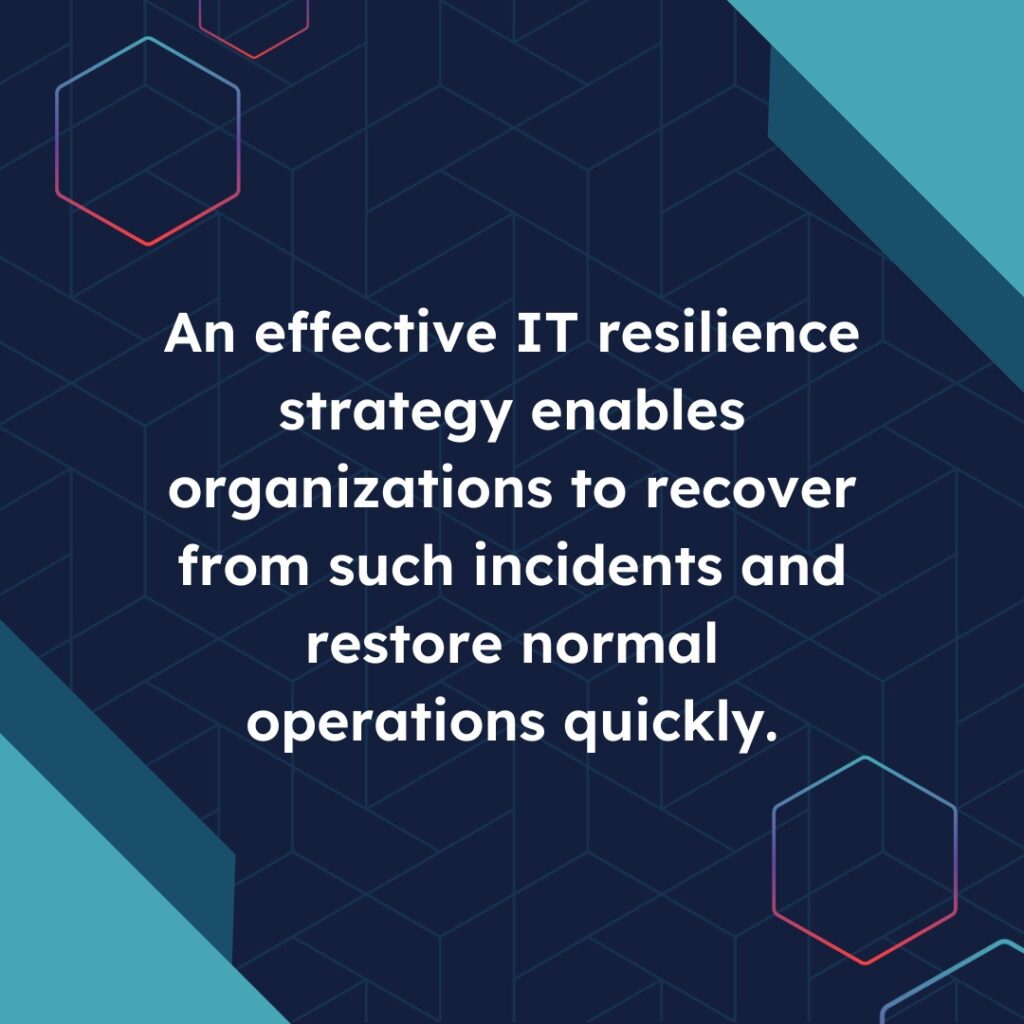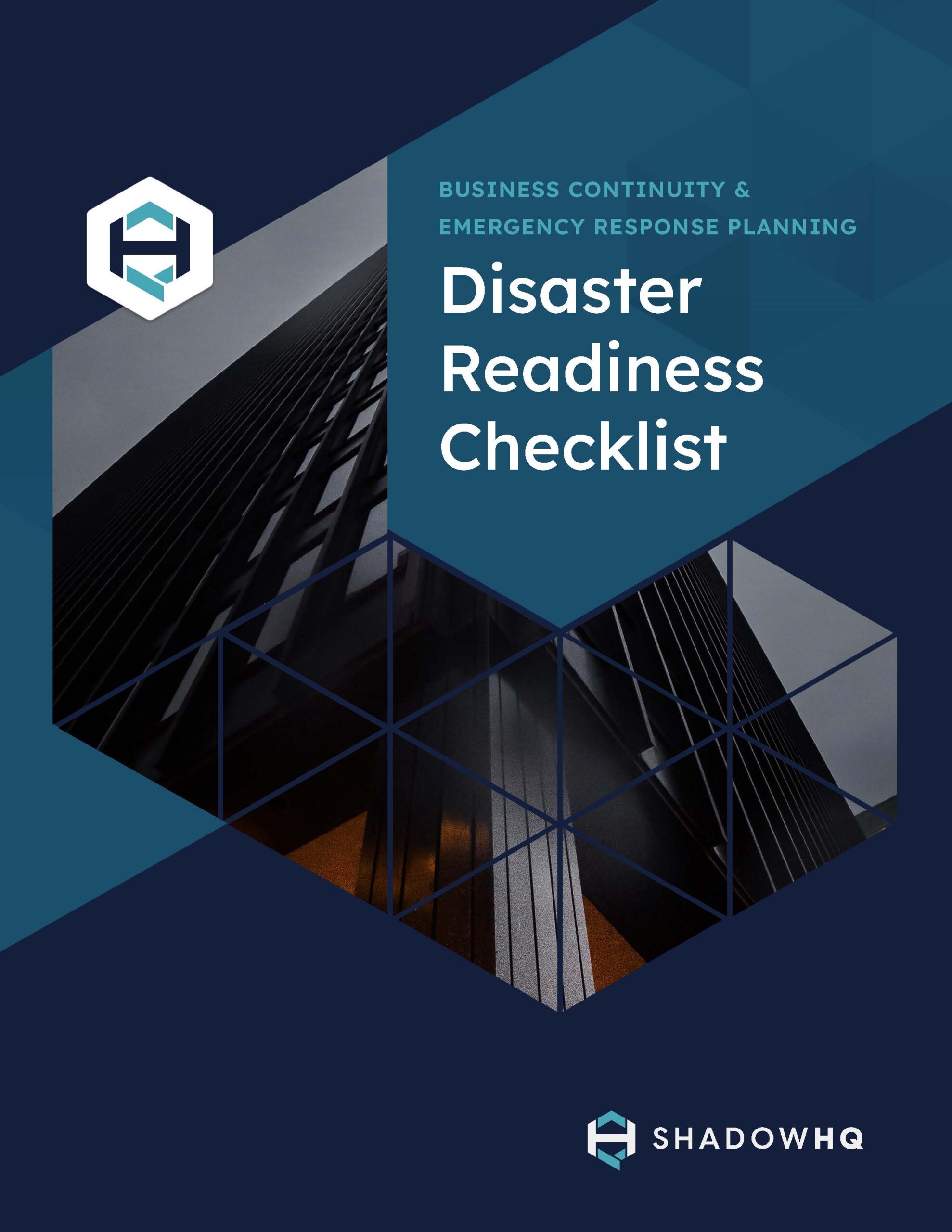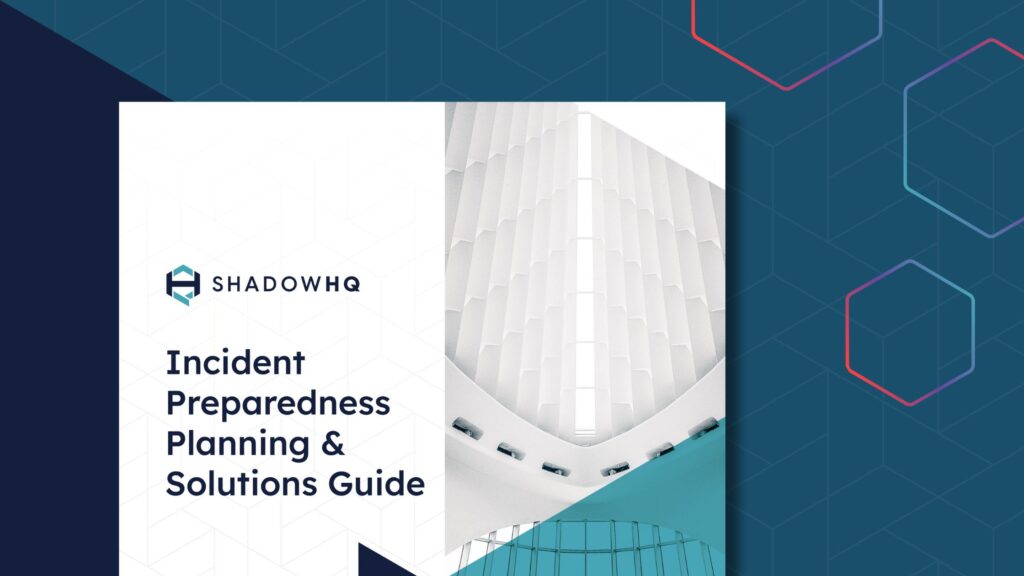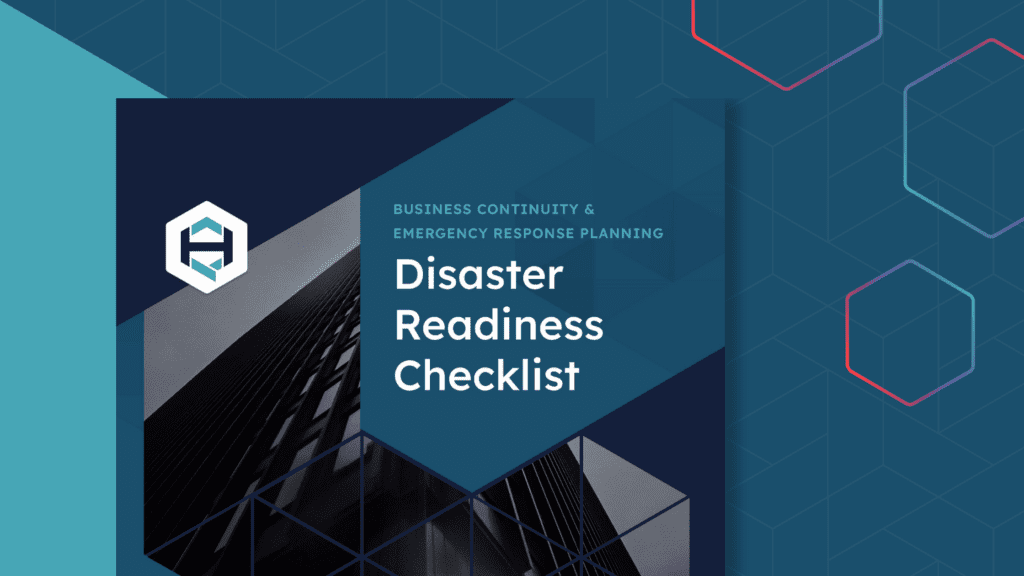Mastering IT Resilience Management: Strategies for Effective Solutions
What is IT Resilience Management?
IT resilience management is essential to modern business operations, ensuring that organizations can continue functioning effectively in the face of disruptions.
This practice combines principles from business continuity planning and IT disaster recovery to create a comprehensive strategy to maintain critical systems and data availability.
Today, we’ll explore the concept of IT resilience management, its importance, and how it integrates with business continuity planning and business resilience management.
The Concept of IT Resilience Management
At its core, IT resilience management is about preparing for, responding to, and recovering from incidents that could disrupt IT services. Incidents can include natural disasters, cyber-attacks, hardware failures, and software bugs to human errors. The goal is to minimize downtime and ensure that the business can operate smoothly despite these challenges.

IT resilience management involves a holistic approach, encompassing technical solutions, organizational processes, business processes, policies, and training. A successful program requires the collaboration of various organizational departments, including IT, operations, risk management, and executive leadership.
The Importance of IT Resilience Management
Stakes are high in today’s digital age, where businesses heavily rely on technology. Depending on the business, a single hour of downtime can lead to significant financial losses, damage to reputation, and loss of customer trust, highlighting the importance of business resilience.
Additionally, the increasing sophistication of cyber-attacks has made IT resilience management more critical than ever. Cyber-attacks, such as ransomware, can cripple an organization’s operations by locking essential data or systems.
An effective IT resilience strategy enables organizations to recover from such incidents and restore normal operations quickly.
Key Components of Business Continuity and Disaster Recovery Planning
Business continuity planning (BCP) and IT resilience management are closely intertwined. BCP focuses on ensuring that an organization can maintain essential functions during and after a disaster, while IT resilience specifically addresses the technological aspects of this continuity.
Risk assessment and Business Impact Analysis (BIA): Identifying potential threats and their impact on business operations. This process includes evaluating the likelihood of different disruptions and their potential severity.
Strategy development: Formulating resilience strategies to mitigate identified risks and ensure continuity. Strategies may involve setting up alternative work locations, redundant systems, and backup procedures.
Plan development: Creating detailed plans that outline the steps to be taken during a disruption, such as communication plans, recovery procedures, and roles and responsibilities.
Training and testing: Regularly train employees on their roles in the BCP and conduct tests to ensure the plans are effective and up-to-date.
IT resilience management fits into this framework by addressing the specific needs of IT systems and data, involving several key elements:
Infrastructure redundancy: Ensuring critical systems have redundant components and can failover seamlessly. Redundancy includes using technologies like load balancing, clustering, and virtualization.
Data backup and recovery: Implementing robust backup solutions to ensure that data can be restored quickly in the event of a loss, such as regular backups, offsite storage, and rapid recovery procedures.
Cybersecurity measures: Protecting systems from cyber threats through measures such as firewalls, intrusion detection systems, and regular security audits.
Resilience Strategy
A resilience strategy is a comprehensive plan that outlines an organization’s approach to managing risks and disruptions. It involves identifying potential risks, assessing their impact, and developing plans to mitigate them. This strategy should be closely aligned with the organization’s overall business objectives and regularly reviewed and updated to ensure its effectiveness.
A key component of a resilience strategy is conducting a thorough risk assessment. This process helps identify potential threats and evaluate their likelihood and potential impact on business operations. Coupled with this is a business impact analysis (BIA), which identifies critical business functions and assesses the potential impact of disruptions on these functions. The BIA also determines the minimum level of service required to maintain business continuity and the maximum tolerable downtime for each critical function.
By integrating these elements, a resilience strategy ensures that an organization is well-prepared to handle disruptions and maintain business continuity.
The Role of IT in Resilience Management
IT plays a pivotal role in resilience management, serving as the backbone of an organization’s operations. IT resilience management involves ensuring that critical IT systems and data are available and accessible during disruptions. This includes implementing robust disaster recovery planning, data backup and recovery processes, and IT service continuity management.
Disaster recovery planning is essential for quickly restoring IT systems and data after a disruption. This involves regular backups, offsite storage, and rapid recovery procedures to minimize downtime. Additionally, IT resilience management involves implementing strong security measures to prevent cyber-attacks and data breaches, which can significantly impact an organization’s operations.
IT should also be actively involved in developing the resilience strategy, providing valuable input on potential risks and the impact of disruptions on IT systems and data. By doing so, organizations can ensure that their resilience strategy is comprehensive and effective.
Key Principles of Resilience Management
There are several key principles of resilience management that organizations should follow to ensure they can effectively respond to disruptions:
Risk Management: Identify and assess potential risks and develop plans to mitigate them. This involves conducting regular risk assessments and updating plans as needed.
Business Continuity Planning: Develop a comprehensive plan to ensure business continuity during disruptions. This includes identifying critical business functions and establishing procedures to maintain them.
Operational Resilience: Ensure that critical business functions can continue to operate during disruptions. This involves implementing redundancy and failover mechanisms.
IT Resilience Management: Ensure that critical IT systems and data are available and accessible during disruptions. This includes disaster recovery planning and cybersecurity measures.
Communication: Maintain clear and effective communication with stakeholders during disruptions to keep them informed and manage expectations.
Training and Awareness: Provide regular training and awareness programs to ensure that employees understand the resilience strategy and their roles in implementing it.
By adhering to these principles, organizations can achieve operational resilience and ensure business continuity.
Effective Resilience Leadership
Effective resilience leadership is crucial for ensuring that an organization can respond effectively to disruptions. Resilience leaders should have a clear understanding of the organization’s resilience strategy and be able to communicate effectively with stakeholders during disruptions.
These leaders must be capable of making quick and effective decisions, prioritizing actions to ensure business continuity. They should provide guidance and support to employees, helping them navigate through disruptions. Additionally, resilience leaders should focus on continuous improvement, learning from past disruptions to enhance the organization’s resilience over time.
Strong resilience leadership ensures that an organization can maintain business continuity and emerge stronger from any disruption.
Top Business Benefits of IT and Operational Resilience Management
Implementing IT resilience management offers several benefits crucial for modern businesses that maintain seamless operations and secure their market position.
So, let’s delve deeper into the key benefits of comprehensive IT resilience management.
Reduced Downtime
One of the primary benefits of IT resilience management is the significant reduction in downtime during disruptions. Organizations can quickly respond to and recover from incidents with robust plans and systems, ensuring continuous operations.
Reducing downtime involves implementing redundancy in critical systems, using technologies like load balancing and clustering to distribute workloads and prevent single points of failure.
Additionally, regular backups and rapid recovery procedures ensure that data can be restored quickly, minimizing the time systems are offline.

Enhanced Security
IT resilience management includes strong cybersecurity measures that protect systems from various threats, such as cyber-attacks, data breaches, and malware. By integrating cybersecurity into the resilience strategy, organizations can reduce the risk of security incidents that could disrupt operations.
Enhanced security measures may include firewalls, intrusion detection and prevention systems, regular security audits, and employee training on cybersecurity best practices. These measures help to detect and mitigate threats before they can cause significant damage.
By proactively addressing security risks, organizations can protect sensitive data, maintain the integrity of their systems, and avoid costly breaches that could result in regulatory fines and loss of customer trust.
Improved Reputation
The ability to maintain operations during crises significantly enhances an organization’s reputation. Customers, partners, and stakeholders trust companies that can demonstrate reliability and resilience, even in crises.
An improved reputation extends to internal stakeholders as well. Employees are more likely to remain engaged and motivated when they know their organization is prepared for emergencies and prioritizes operational continuity.
Regulatory Compliance
Many industries have stringent regulatory requirements for business continuity and disaster recovery. Failure to comply with these regulations can result in severe penalties, legal consequences, and damage to the organization’s reputation.
IT resilience management helps organizations meet these regulatory requirements by ensuring robust plans and systems are in place to handle disruptions.
Regulations such as the General Data Protection Regulation (GDPR) in Europe, the Health Insurance Portability and Accountability Act (HIPAA) in the United States, and the Sarbanes-Oxley Act (SOX) mandate that organizations implement measures to protect data integrity and availability.
By adhering to regulatory standards through IT resilience practices, organizations avoid legal repercussions and demonstrate their commitment to maintaining high operational integrity and data protection standards.
Competitive Advantage
Organizations that can quickly recover from disruptions gain a competitive edge over those that cannot. Maintaining operations and serving customers during crises allows businesses to capitalize on opportunities and maintain their market position.
Additionally, a strong reputation for resilience can attract new business opportunities. Partners and clients are more likely to engage with companies they perceive as capable of handling disruptions without significant impact on their operations.
Reliability can be decisive in competitive markets, where trust and consistency are highly valued and hard-earned.
Common Challenges in Resilience Management
Organizations often face several common challenges in resilience management, including:
Lack of Resources: Insufficient resources, such as funding and personnel, can hinder the implementation and maintenance of a resilience strategy.
Complexity: Complex organizations with multiple business units and locations can find it challenging to develop and implement a cohesive resilience strategy.
Communication: Poor communication during disruptions can lead to confusion and mistrust among stakeholders, making it difficult to ensure business continuity.
Training and Awareness: Insufficient training and awareness programs can result in employees not fully understanding the resilience strategy and their roles in implementing it.
Addressing these challenges requires a proactive approach, including securing adequate resources, simplifying processes, improving communication, and providing comprehensive training. By doing so, organizations can enhance their resilience management and ensure business continuity.
By integrating these new sections, the article now provides a more comprehensive overview of IT resilience management, covering essential strategies, roles, principles, leadership, and challenges.
IT Resilience is Critical for Any Organization
IT resilience management is a vital aspect of modern business operations. Organizations can maintain continuous operations, protect their reputation, and comply with regulatory requirements by ensuring IT systems can withstand and recover from disruptions.
Integrating IT resilience management with business continuity planning provides a comprehensive approach to managing risks and ensuring long-term success.
How resilient is your organization in natural disasters, cyber-attacks, or system failures? We’ve compiled a disaster readiness checklist to help you gauge your resilience — and areas that need work.
Check out our disaster readiness checklist today to see if you’re ready to meet threats on the horizon.
EWEBINAR
Experience the ShadowHQ platform
Walk through a cyber breach scenario in a 15 minute demo.

GUIDE DOWNLOAD
Disaster Readiness Checklist
When an emergency happens, every minute counts.


